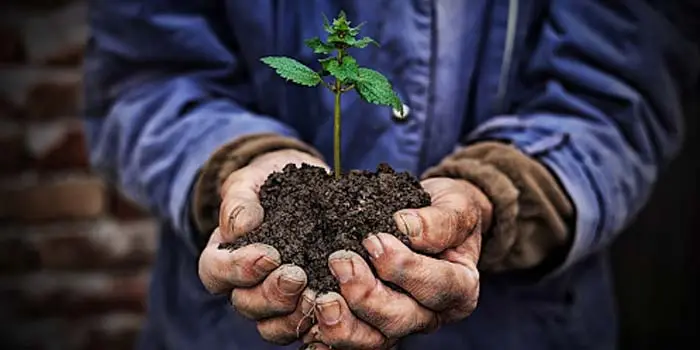6 Surprising Effects of Landscaping on Property Values


Spring is just around the corner. For many people, that means it’s time to start thinking about landscaping updates. Before you start digging holes and planting trees, it’s important to understand the effects of landscaping on property value. After all, property value plays a big role in your homeowners insurance premiums.
Protect your home when landscaping by understanding how landscaping affects home value. Here’s what you need to know.
Many homeowners hope that their landscaping efforts will earn them a return on their investment. It’s widely known that mature landscaping not only adds beauty to your lawn, but when planted correctly, can also increase a home’s value. According to a study by the USDA Forest Service, healthy, mature trees add an average of 10% to a property’s value.
Trees can have a big effect on property value. When trees are planted too close to the home, large tree roots can extend underneath the property, causing foundation issues. Oak, willow and poplar trees are known for their potential to damage property when not planted properly, as their tree roots can become very large. Large tree roots can also break through concrete and damage walkways or patios.
Tree roots also naturally grow toward water sources, which causes them to grow toward sewer lines. When a root finds a leak in a water pipe, it will quickly grow into the pipe causing blockages, breaks and disrupting the water lines. This can cause flooding in your yard and a host of other problems.
When deciding which trees to plant and where to plant them don’t forget to look up; tall trees planted in an incorrect place can interfere with electric and cable lines running above your home.
Do your homework to make sure the tree you want to plant is appropriate for your yard. Verify with your utility company where the gas, electric, cable and sewer lines are located so you can plan where to plant your trees and shrubs accordingly.
In the spring and summer, some trees can dry out soil in your yard, potentially causing ground shrinkage under your home’s foundation. When deciding which plants to add to your landscape, be sure to take note of the moisture levels of the soil in your region.
Ivy can add visual appeal to your home, but it can also lead to serious issues. When ivy grows along the side of a home, it can damage the paint and siding. It’s even powerful enough to grow into cracks in bricks and separate them, leading to stability issues. If left to grow all the way to the roof, vines may lift roof tiles and pull apart guttering.
Never let your ivy grow high enough to reach your roof. Before planting vines that travel along the side of your home, ask your local landscaping expert about the possibility of damage to your siding.
Did you know that your landscaping could actually deter burglars? By strategically placing prickly bushes and shrubs in front of your windows, burglars may be less likely to attempt to enter your home.
Native plants are trees, shrubs or flowers that grow naturally in your region. These plants can increase property value because they often require less maintenance because they naturally thrive in their native region.
Iowa
Native prairie flowers support Iowa’s historical ecosystem. Consider planting prairie blazing stars, butterfly milkweed, purple coneflower and cardinal flowers to attract native butterflies and insects.
If you’re looking to add a pop of color to your landscape, Red Maple trees are a favorite native tree for Iowans due to their spectacular fall foliage. Native wildflowers that make good additions to woodland gardens are Canadian Wild Gingers and Virginia Bluebells.
Nebraska
The Obedient Plant is a popular plant for those living in the central Midwest. Its white petals with tall green stems make it a great addition to gardens and bouquets. Indiangrass is a prairie plant that brings out Nebraska’s plain heritage. The grass can grow to be 5 feet tall, and flowers bloom in late summer.
Arizona
The Blue Palo Verde tree grows bright yellow flowers in the spring and summer months. It is native to Arizona, so it is accustomed to the dry weather, requiring little water.
Wisconsin
The Sugar Maple is a large tree that provides multicolored foliage in autumn, making it a popular choice for homeowners in the Midwest. The American Bellflower is native to Midwest states and can grow up to 4 feet tall. The upper portion of the stems are lined with lavender-blue flowers.
Minnesota
The Prairie Wild Rose is a pink flower plant that is native to Minnesota. It grows well in full sun and can withstand harsh winters. The Ninebark shrub is a popular choice for Minnesotans due to its attractive white flower clusters and its ability to thrive in sunlight.
Kansas
Oak trees are native to Midwestern states, including Kansas. The Annual Sunflower adds a bright yellow color to every landscape, and this flower thrives in the Kansas climate.
North Dakota
Similar to other Midwest states, native prairie grasses and flowers are excellent additions to home landscapes. The Dotted Blazing Star is a prairie flower that will add rose-lavender flowers to your garden.
New Mexico
Plants native to New Mexico are drought tolerant. Popular choices include Butterfly weed and Milfoil.
As you get started with your spring landscaping projects, don’t forget about the effect they can have on your home’s value. Contact a local Farm Bureau agent to learn more about how you can protect your property and your hard work with homeowners Insurance from Farm Bureau.